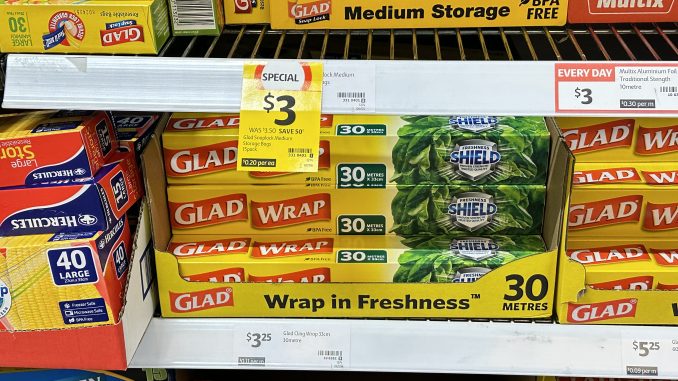
When we walk into the Australian supermarket, we can notice that many brands prioritise green colour as the main expression of their packaging design, featuring a relatively higher price. Are we purchasing eco-friendly products?

“I know it sounds really weird, but as long as it is presented as green or eco-friendly, I would choose it,” said Alex, an international student from the University of Sydney, who has lived in Australia for four years.
“My first instinct is often to see the green, the colours, and the images of the trees and koalas, and eco-friendly stuff, and to buy it,” local consumer Kristine also shared a similar view, “but then I try to stop myself and think, okay, is this really sustainable?”
The Rise of Green Consumerism
According to the 2024 Gen Z and Millennial Survey (Deloitte, 2024), environmental sustainability remains a top concern for Gen Zs, with 62% of them reporting feeling anxious or worried about climate change, and 64% of Gen Zs are willing to pay more to buy environmentally sustainable products.
“I think sometimes purchasing this kind of green brand is also out of the self-expression or representation as a socially responsible person,” Alex said.

Numbing “Green-washing” Trap
Although nowadays young people have a stronger intention to purchase “green” products, later they might find themselves falling for the “green-washing” trap. Green-washing happens to a brand that pretends to be “green” to look good and sell more, but doesn’t actually back it up with genuine environmental action.
Clorox, the manufacturer of GLAD garbage bags, was fined $8.25m over misleading ‘ocean plastic’ claims on 2.2 million products after the ACCC (Australian Competition and Consumer Commission)’s accusations in 2021. It utilised the green ‘50% Ocean Plastic Recycled’ identification to advertise its products as green contributors, but actually, the reused materials were situated up to 50km away from a shoreline, combined with other non-recycled plastic.

This advertising ethics issue resonated deeply with my interviewees. “Like I bought something that I thought was 100% recycled or used a certain type of material, but then kind of looked deeper, but it turned out to maybe only be 75% recycled or something like that,” said Kristine.
“I know the fashion industry causes a lot of pollution to the environment, but they often claim to be doing some sustainable acts, like using recyclable fabrics or stuff, which I find very ironic because it’s self-evident,” said Alex.
Although many consumers have experienced green-washing purchasing, generally, they don’t have sufficient awareness of how to resist this potential consumer exploitation, and how to make a real contribution to the environment through smart buying. They barely spend time doing research, but just tend to believe what brands say on their packages.
“A lot of people don’t know how to distinguish green-washing brands from real eco-friendly brands,” said Alex, “although we know this definition, we don’t know how to apply it in reality.”
“I care about our environment, but I don’t trust advertising”
Green-washing products also undermine consumers’ self-confidence in choosing real, sustainable items. “There’s a difference between awareness and caring about it. I think a lot of people will have a general understanding, but there are also a lot of people who’ll… just not trust whatever the advertiser is claiming, me included,” said Murray, a local student from the USYD.
“Sometimes, if it’s a product I’m likely to be buying regularly, then I’ll go and do a little bit of research and try and verify it. But, you know, if it’s just a once-off thing, then I’ll give it no credit at all, really.”
“I need to try harder to prove I am sustainable”
This kind of situation also squeezes out the space for those honest businesses that even need to try harder to sustain customers’ trust and build a long-term brand reputation. “We’ve seen a clear rise in customer scepticism toward environmental claims in ads. So we have to focus on how to make people better informed when they ask for the proof behind our claims,” the Asia Pacific Director of Clickpress Group, Patty Cao said.
“We back our claim with data and the certifications of all the work, and a language that says yes, maybe, or maybe not. We explain exactly what we’re doing”, Patty expressed, “we use plain language, so our target audience can understand clearly, like our pencil(Eternal Pencil from Clickpress Group) equals 1,000 normal pencils. You write without dust and don’t need a sharpener. ”
“When a client asks questions about our sustainable products in detail, in technique, we have to give honest feedback on the questions or answers we have to give back to our engineering team, so our audience will trust our branding. This helps us to build real trust and long-term client relationships.”
Governments’ Guide, Brands’ Values, and Individuals’ Caring
The current regulations in Australia, such as ACCC guidelines, attempt to make a difference against the green-washing issue, guiding consumers’ behaviour and brands’ developing paths of ethical advertising. For further development, “If we consumers can get informed by the government or whatever committees so that we can verify brands are really eco-friendly or not, just maybe one glance or two, like easily, that would be great”, said Alex.
Considering the characteristic of “Green-washing”, we still need to defend consumers’ environmental values with brands’ and individuals’ power. “The ACCC’s guideline is a good step, giving standard and strong enforcement and clear rules. But green-washing is quite complicated and involving. It’s hard to step forward a green-washing or not”, said Patty, “ultimately, brands also need to commit to honesty and transparency.”
- Set a measurable environmental goal
- Verify the claims with certification and the real data
- Utilise plain language to explain sustainable efforts
- Track our progress through our regular reviews and customers’ feedback
- Make consistent performance, both online and offline
- Engage partners and teams to keep sustainable values
“People will expect a brand to take real action. The purpose of a promotion in which a brand focuses on real impact will stand out”, Patty said.
“Stop before buying a product. Just do your research, do your homework, and make sure you have as much information on those products before you buy”, Kristine said.


Be the first to comment